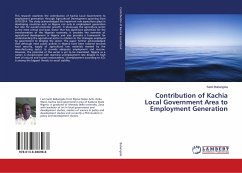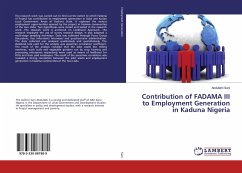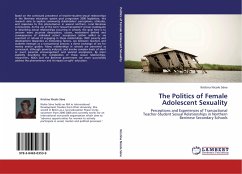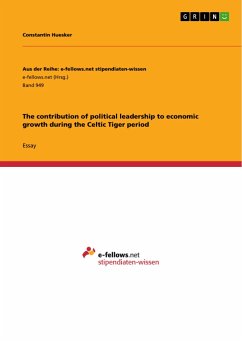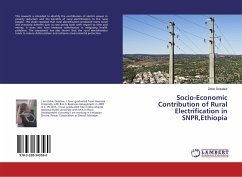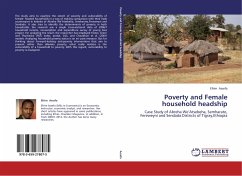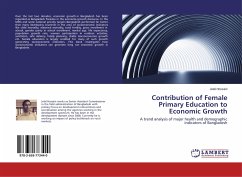
Contribution of Female Primary Education to Economic Growth
A trend analysis of major health and demographic indicators of Bangladesh
Versandkostenfrei!
Versandfertig in 6-10 Tagen
24,99 €
inkl. MwSt.

PAYBACK Punkte
12 °P sammeln!
Over the last two decades, economic growth in Bangladesh has been regarded as Bangladesh Paradox in the economic-growth discourse. In the MDG and some national priority targets Bangladesh performed far better than many developing countries in the area of socioeconomic indicators like child mortality, maternal mortality, total fertility, gross enrollment in school, gender parity in school enrollment, marital age, life expectancy, population growth rate, women participation in outdoor activities, sanitation, safe delivery, family planning, stable macroeconomic growth etc. Female education is lar...
Over the last two decades, economic growth in Bangladesh has been regarded as Bangladesh Paradox in the economic-growth discourse. In the MDG and some national priority targets Bangladesh performed far better than many developing countries in the area of socioeconomic indicators like child mortality, maternal mortality, total fertility, gross enrollment in school, gender parity in school enrollment, marital age, life expectancy, population growth rate, women participation in outdoor activities, sanitation, safe delivery, family planning, stable macroeconomic growth etc. Female education is largely credited for many of such growth generating socioeconomic indicators. This book investigates how socioeconomic indicators can generate long run economic growth in Bangladesh.




